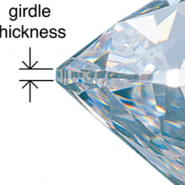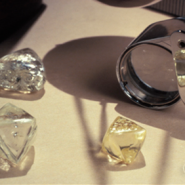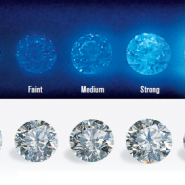When a diamond interacts with light, every angle and every facet affects the amount of light returned to the eye. The sparkle of a diamond, then, has everything to do with how well the cut of the diamond was planned and executed. Although a diamond’s value is based on its unique combination of color, clarity, cut, and carat weight (the 4Cs), a diamond’s cut is the most complex to assess, and it’s the only component that can be directly affected by the diamond cutter.
Read More >>Diamonds are among the hardest natural minerals on Earth, yet they require special care to keep them shining and looking their absolute best. In fact, a diamond’s sparkle can be lost by the mere touch of a finger, which can cause dirt to collect on the diamond.
Read More >>Most consumers don’t realize the long, complicated, precarious journey a diamond takes from its humble beginning amidst tons of rock in the Earth to its sparkling transformation in a jewelry store counter. An especially critical point in the diamond’s journey is its time with the diamond artisan, who must cut the diamond to maximize its beauty.
Read More >>Have you ever noticed the term “Fluorescence” on a GIA Diamond Grading Report? Did you know that some, but not all, diamonds show effects under ultraviolet light?
For most people who purchase diamonds, fluorescence will be a non-issue, but some might be confused by the term. Below are commonly asked questions, and helpful answers from GIA researchers who have studied fluorescence in depth.
Read More >>May’s birthstone is the brilliant, green emerald. Legends gave the emerald the power to make its wearer more intelligent and quick-witted and its the gemstone for 20th and 35th wedding anniversaries. It was once believed to cure diseases like cholera and malaria, and its color reflects new spring growth, which makes it a perfect choice of a birthstone for the month of May.
Read More >>





